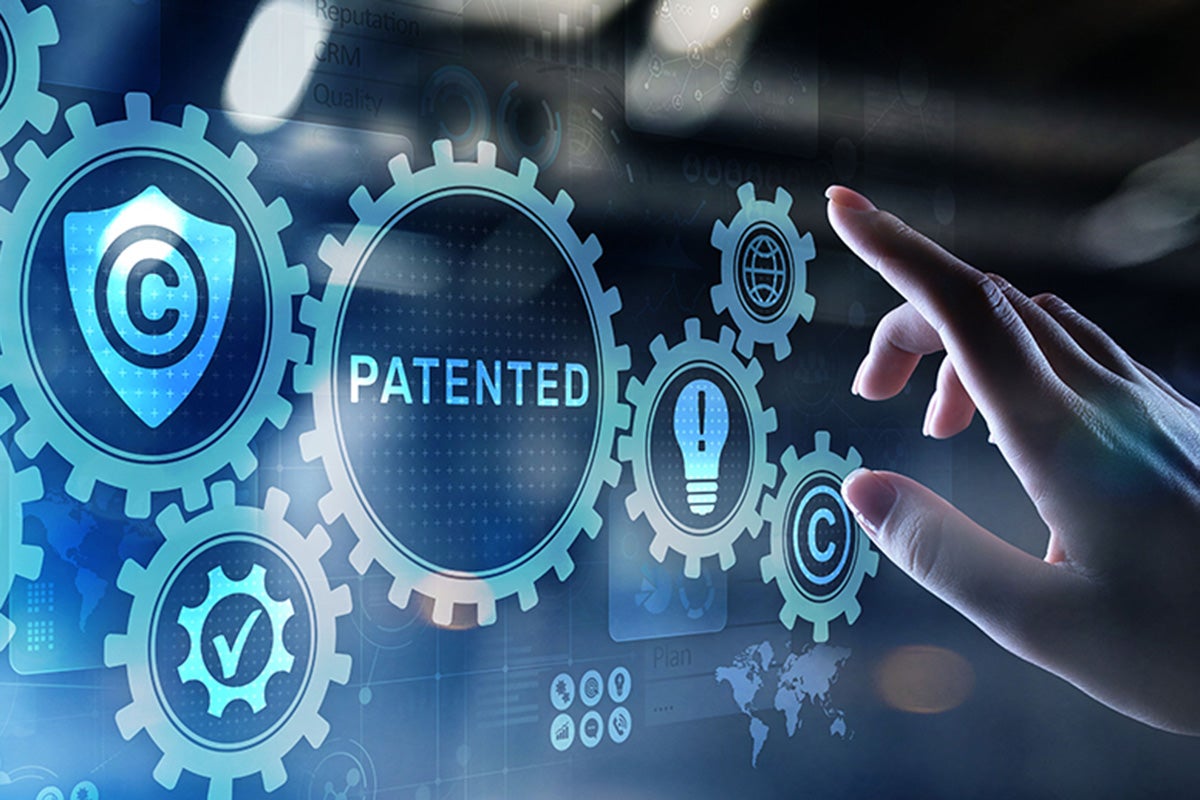UCF ranked 25th among public universities in the nation for producing patents and 60th in the world, according to a new report released today.
The National Academy of Inventors and the Intellectual Property Owners Association ranks institutions every year based on the number of patents received and filed through the U.S. Patent and Trademark Office. Only the first institution listed on the patent is credited. The 2020 report shows UCF on a steady trajectory of growth, climbing five spots in the world rankings and four nationally.
With 46 patents, UCF was ahead of Carnegie Mellon, Texas A&M and Penn State, and just behind Ohio State (48) and Michigan State (47). The University of California system (597), Massachusetts Institute of Technology (383) and Stanford University (229) took the top three spots. UF ranked the highest among the Florida universities, coming in 11th with 140 patents.
“Patents is one measure of our growth and impact,” says Elizabeth Klonoff, vice president for Research at UCF. “We are strategic about selecting the inventions for patent protection to ensure fiscal responsibility and to maximize the potential of receiving valuable patents. Steady growth of UCF’s research base, inventions, patents and industry licensing partnerships feeds our economic ecosystem, which brings not only financial benefit to UCF, but also solidifies our place as a top-tier research institution. Doing our part means we benefit the local community and the society at large by contributing to technological advancements that improve people’s lives and drive the economy.”
Some of the 46 patents secured in 2020 have been licensed to companies, which invest in taking the product to market. That means more jobs and often investing in facilities, which all impact the economy. For example, one of UCF’s patents for a natural killer-cell therapy against cancer, was licensed to a local company, which was recently acquired by Sanofi, an international pharmaceutical company. Patents are a long-term investment for a university, says Svetlana Shtrom ’08MBA, director of UCF’s Technology Transfer Office.
“Patents themselves do not generate revenue,” she says. “Licensing patents to industry partners to facilitate transformation of promising research results into valuable products brings true benefit to the university and society. Our data has shown that it takes on average 5 years for 50% of our inventions/technologies to be licensed. It takes an additional 3 to 5 years or longer for companies to commercialize technologies licensed from the university and to begin selling products. The benefit to the university is realized when these products positively impact the well-being of our society through improvements in technology and public health.”
Here are some of the inventions and technologies that led to patents in 2020.
Nanoparticle platform stimulates production of natural killer cells
Lead researcher: Associate Professor of Medicine Alicja Copik, College of Medicine
This invention relates to a nanoparticle-based platform for generating potent natural killer (NK) cells for cancer and anti-viral treatment. NK cells are part of the body’s immune system and can kill tumor cells and virus-infected cells. The nanoparticle platform contains agents that stimulate the NK cells to increase their numbers, essentially creating an army of NK cells. This technology is licensed and in development for clinical use.
Combination drug treatment to treat neurological disorders
Lead researcher: Professor of Medicine Kiminobu Sugaya, College of Medicine
This invention relates to a combination therapy to treat neurological disorders such as Alzheimer’s disease and Parkinson’s disease. The treatment is a combination of the drug NBI-18, which increases endogenous neural stem cells, and phenserine, which reduces the production of toxic amyloid plaques in the brain. Mice treated with this combination therapy had increased neural stem cells production and improved performance in memory tasks.
Drug characterization for FDA
Lead Researcher: Associate Professor Debashis Chanda, Nanoscience Technology Center
This invention relates to a system that can accurately identify the chirality (molecular mirror images) of drugs, proteins, DNA and other molecules at lower detection limits than conventional detection systems. The new technology enables pharmaceutical companies to identify both enantiomers (right- and left-hand versions) of a molecule. Pharmacological and toxicological characterization of chiral molecules plays a crucial role in the Food and Drug Administration approval process since some enantiomers can cause toxic or severe side effects.
High Performance Energy Storage
Lead Researcher: Assistant Professor YeonWoong (Eric) Jung, Nanoscience Technology Center
This invention relates to low-cost, non-toxic novel materials that enable next-generation supercapacitors to outperform current state-of-the-art energy storage technologies. The new hybrid core/shell nanowires enable manufacturers to produce flexible supercapacitors with exceptional charge−discharge endurance for portable, lightweight consumer electronic devices.
High-power lasers
Lead researcher: Associate Professor Arkadiy Lyakh, Nanoscience Technology Center
This invention relates to new quantum cascade lasers that provide the ultra-high output power, brightness, and beam quality needed for applications such as hyperspectral imaging, infrared illumination, and military countermeasures that protect aircraft against shoulder-fired heat-seeking missiles.
Track contamination in wetland environments
Lead Researcher: Professor Ni-bin Chang, Civil Engineering Department, College of Engineering & Computer Science
This invention relates to two novel velocimeter devices that assist in the measurement of low-flow velocity and direction of water in both wells and wetland environments. Tracking the movement of nutrients, metals, sediments, and other contamination in slow-moving water is challenging, and these new device designs are easy to use, cost-efficient, have improved accuracy, and are equipped with wireless communication units.
Eco-Friendly Targeted Removal of Fire Ants
Lead researcher: Associate Professor Joshua King, College of Sciences
This invention is a hot-water system for removal of ground dwelling insects, such as fire ants and termites, without the use of pesticides. The system includes a wand connected to a water heating tank and provides large volumes of hot water (approximately heated to boiling temperature, 212oF) to a targeted area. The technology can be used as an alternative to chemical mound treatments or chemical baits in areas unsuitable for pesticide application such as parks and wildlife preserves.
UCF and other public universities in the Florida High Tech Corridor region — the University of South Florida and University of Florida — together were awarded 309 U.S. utility patents last year, more than 1½ times the number of patents granted to other globally recognized centers of innovation, including North Carolina’s Research Triangle and the University of Texas System.
“This achievement by the Corridor Council’s three universities demonstrates the strength of Florida’s innovation ecosystem and its role as a catalyst for statewide economic growth,” says Florida High Tech Corridor Council CEO Paul Sohl, retired Navy rear admiral.





